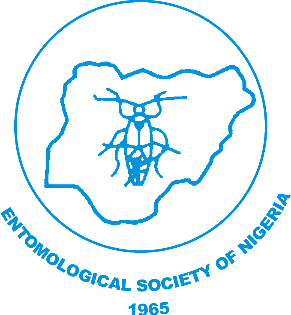Chemical composition and Growth Rate of Blowfly Maggot from Poisoned Cadavers in Awka, Nigeria
Abajue, M. C. and Ewuim, S. C.
NJE Vol. 34: 123-132, 2018
DOI: 10.36108/NJE/8102/43(0131)
Abstract: Forensic entomology is the study that uses insects found on a decomposing cadaver to estimate the time of death of the animal. However, such estimation may not be incorrect if the body was altered before or after death. One of these alterations is if the victim died of induced poison which is capable of delaying insect infestation and may therefore, increase or decrease the rate of the maggots that will be used to estimate the time of the animal’s death. Therefore, a study was carried out to assess the growth rate of blowfly maggots recovered from decomposing poisoned pig cadavers. A total of 16 healthy pigs (Sus scrofa Linn.) with mean weight of 22.3 ± 1.9 kg were used for the study. Eight of the pigs were sacrificed with zinc phosphide poison through their food. The remaining eight pigs were sacrificed by asphyxiation. Their bodies were deposited in a building (6°152 18.063 N and 7°062 41.373 E) and in a forest (6°152 15.323 N and 7°062 40.223 E) to mimic indoor and outdoor decompositions respectively at Awka, Anambra State, Nigeria. The effects of the rodenticide on the cadaver decomposition and growth rate of the blowfly maggots found on them were studied. The blowfly maggots collected from the poisoned and the asphyxiated pig cadavers were killed with hot water and preserved in 80% ethanol and their linear growths on daily basis measured with metre rule. Assessment of the rodenticide on the maggots recovered from the poisoned cadavers was performed with Atomic Absorption Spectrophotometer (AAS) to assess zinc and phosphorus which were the active ingredients of the poison. Analysis of variance result showed that there was significant difference between the daily mean growths of the maggots while students’t-test result showed that no significant difference exists between the mean lengths of the maggots recovered from the poisoned and the asphyxiated cadavers. The AAS detected zinc only on the maggot tissues while phosphorus was not detected. The study showed that heavy metals such as zinc in rodenticides can be detected in maggots recovered from a badly decomposed cadaver. The toxicity of the rodenticide did not affect the growth rates of maggots recovered on the poisoned cadaver as compared with the maggots recovered on the asphyxiated cadaver. Other implications related to toxicological studies on cadaveric insects as a novel approach in forensic entomology and serving as alternative matrices in forensic toxicology in questionable deaths were also highlighted.
Keywords: Cadaver; rodenticide; decomposition; maggot; entomotoxicology.
